Construction sites are dangerous places to work. The Occupational Safety and Health Administration (OSHA) says nearly 6.5 million people work at approximately 252,000 construction sites across the nation on any given day. The fatal injury rate for the construction industry is higher than the national average for all industries. Out of 3,929 worker fatalities in private industry in 2013, 796 or 20.3 percent were in construction – 1 in 5 worker deaths, OSHA says.
The Bureau of Labor Statistics (BLS) says nonfatal construction industry accidents of all kinds resulted in 71,700 injuries that required a worker to take at least one day away from work in 2012, according to the most recent statistics.
The more common accidents that are likely to injure workers at construction sites include:

- Falls. OSHA puts falls at the top of its “Construction’s Fatal Four” list – ahead of being struck by objects, electrocutions and being caught-in/between objects or surfaces. Falls on the same level (tripping or slipping and falling) and falls to a lower level (from ladders, scaffolding and roofs, for example) repeatedly rank in the Top 5 on the Liberty Mutual Workplace Safety Index. A worker who falls may suffer anything from a fracture to a traumatic brain injury (TBI) to death from internal organ injuries. Construction workers who fall at work sites are at risk of being impaled by parts of the structure, construction materials, machinery or equipment. Direct costs of fall accidents across all industries top $10 billion a year, Liberty Mutual says.
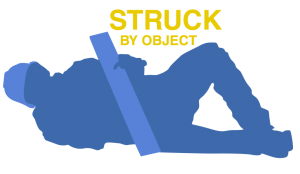
- ‘Struck by Object.’ This formal accident description refers to being hit by a falling object, such as a tool or material dropped from a floor above; a rolling object, such as a work truck, forklift, road grader or backhoe; a swinging object, such as a skiff of debris being hoisted by a crane; or a flying object, such as a nail or other material ejected from a power tool. This type of accident can cause head injuries, eye injuries, fractures, internal organ injuries, cuts, bruises and other blunt-force trauma. Being struck by an object can also cause a fall or an injury from contact with machinery. Struck-by injuries cost $5.6 billion a year.
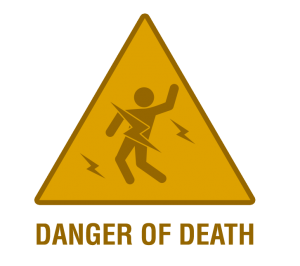
- Electrocution. This type of accident is caused by exposure to electrical energy. Electrical shock is an injury caused by the passage of electric current through the body. Electrical currents can also cause fires, explosions, arc flash and arc blast – each of which can cause burn injuries. The force of an explosion can cause impact injuries, including from being struck by objects or material propelled by the force of the explosion. Electrocution and electrical shock are typically caused by contact with overhead power lines, damaged fixtures or bare wires, defective equipment or tools, or by improper use of extension cords. Lightning strikes on construction sites can also cause electrocution.
- ‘Caught-in / -between accidents.’ A “caught” accident is one in which a worker is injured as a result of being crushed between objects, as opposed to an injury caused by being struck by an object. “Caught” accidents include trench or excavation collapses, which may cause crushing injuries, as well as death by suffocation or oxygen-depletion injuries; being crushed between rolling, sliding or shifting objects, such as cargo being unloaded from a truck; and being caught in machinery, such as hair, a hand or limb, or piece of clothing becoming trapped and a body part being pulled, torn or broken (fractured). Caught-in and -between accidents cost $1.6 billion a year.
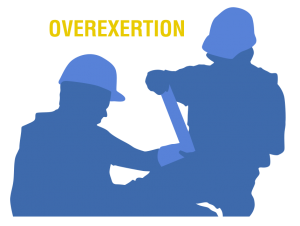
- Overexertion. Injuries to muscles, nerves and tendons from stress and strain are known as musculoskeletal disorders (MSDs). Work-related MSDs, including those to the neck, upper extremities and low back, are caused by lifting, pushing, pulling, holding, carrying, or throwing tools, materials and other objects; bending; reaching overhead; working in awkward body postures; and performing the same or similar tasks repetitively. MSDs include pinched nerves; herniated discs; meniscus tears; sprains, strains, tears; hernias; pain, swelling, and numbness; carpal or tarsal tunnel syndrome; Raynaud’s syndrome or phenomenon; and similar injuries. Overexertion injuries cost American industry $18.4 billion a year.
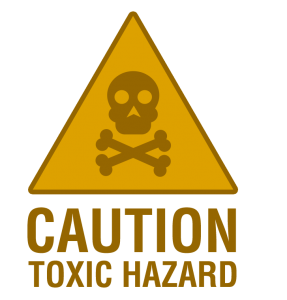
- Chemical and toxic substance accidents. Chemical hazards and toxic substances can cause health hazards such as irritation, sensitization and cancer through contact or respiration and traumatic injury due to their flammability, corrosion and reactivity. Compressed gases used in welding, cutting and brazing, such as acetylene, hydrogen, oxygen and nitrous oxide, are highly flammable and may be set off with a spark or even the impact of a compressed gas tank falling or having something fall onto it.
- Motor vehicle and heavy equipment accidents. Busy construction sites are continually crisscrossed by large trucks and other motor vehicles, such as dump trucks, forklifts, earth movers, excavators, track loaders and cranes. Operator error or faulty equipment can lead to accidents that cause workers on a construction site to be run over or knocked down, or a collision in which drivers are injured. Accidents involving motorized land vehicles caused deaths and such injuries as fractures, TBI, internal organ injuries and other blunt-force trauma at a cost of $2.4 billion to American industry in one recent year.
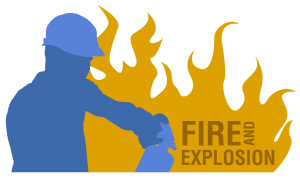
- Fire and explosions. Construction sites often host open-flame fires, flammable liquids and other fire and explosion hazards, in addition to electrical currents and compressed gases and chemicals. Large sites may have gas or diesel pumps for vehicles and heavy equipment, where fuel can be ignited. Many natural and synthetic organic materials, as well as some metals, can form combustible dust that can explode without notice. Severe burns (third- and fourth-degree) can be deadly and, if survived, typically require treatment that includes multiple painful surgeries and rehabilitation, and may still leave the victim disfigured and disabled.
Sources:
- Occupational Safety and Health Administration – Worker Safety Series – Construction
- OSHA – Commonly Used Statistics – Construction’s Fatal Four
- Bureau of Labor Statistics – Numbers of nonfatal occupational injuries and illnesses by case type and ownership, selected industries, 2012
- Liberty Mutual Research Institute for Safety – 2013 Workplace Safety Index
- OSHA – Construction Focus Four Training
- OSHA – Ergonomics – Prevention of Musculoskeletal Disorders in the Workplace
- OSHA – Chemical Hazards and Toxic Substances
- OSHA – Combustible Dust – An Explosion Hazard

Leave a Reply